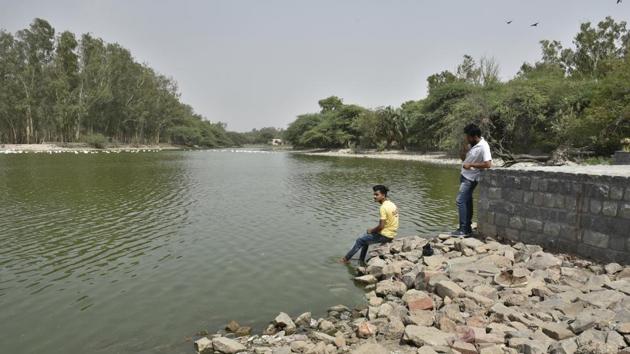Delhi’s dying water bodies to be revived by planting trees near them
Delhi’s environment department is relying on trees to revive the city’s dying water bodies and recharge the depleting groundwater table. Trees will be planted around the water bodies to recharge water and ensure more retention of rainwater. Delhi has over 1,000 water bodies.
Trees have helped make Delhi one of the greenest capitals in the world. Now, the green cover would help authorities to add some blue colour to the city.

The state environment department is relying on trees to revive the city’s dying water bodies and recharge the depleting groundwater table.
Unlike previous years when tree saplings were planted mostly on roadsides, parks and avenues ahead of monsoon to make the city greener, this year the environment department would also plant trees in and around the water bodies to recharge them.
“Trees are known to recharge the groundwater table and hence we have urged various agencies such as Delhi Development Authority, Public Works Department, civic bodies among others to take up plantation drives mostly along the boundaries of water bodies,” said SD Singh, chief executive officer of the parks and garden society under the state environment department.
A study published in Nature Scientific Reports in 2016 revealed that a moderate tree cover can increase groundwater recharge, and that tree planting and various tree management options can improve groundwater resources.
Experts said reviving the water bodies would not just help in recharging the ground water but would also help in maintaining the hydrological balance of the area. It would also help in bringing back aquatic biodiversity and birds, maintain the microclimate of that area and increase soil moisture to enhance vegetation growth.
According to department’s estimates, there are more than 1000 water bodies spread across the city in the form of village ponds, lakes, marshes and step wells. But many of them have dried up because of falling groundwater table, blocking of channels that used to supply rain water, encroachment and dumping of waste.
“While saplings of trees which have large canopies like Banyan, Peepal, Pilkhan, Jamun and Arjun would be planted along the boundaries of these water bodies, we also plan to plant saplings on the bed of the dried up water bodies to recharge the groundwater and in turn revive the water bodies,” said Singh.
Several water bodies, which have already dried up are being illegally encroached by local residents. Officials said that if trees are planted on the bed of these dried water bodies they would also prevent encroachment.
“To increase the rate of percolation of rain water into the ground, we have also suggested to plant saplings of shrubs below the trees. The water from the canopy will fall on the shrubs below and then infiltrate into the soil,” said Singh.
The environment department has also suggested the local authorities to free the water bodies of waste dumping and then link them to the rain water harvesting systems and the drains that carry run off rain water.
“Plantation alone won’t help revive the water bodies. One needs to revive the channels and drainage system that used to bring rain water into the water bodies,” said Faiyaz Khudsar scientist-in-charge of Yamuna Biodiversity Park.
The National Green Tribunal has directed the Delhi government and the corporations to revive and restore all the water bodies across the city.
Stay updated with all top Cities including, Bengaluru, Delhi, Mumbai and more across India. Stay informed on the latest happenings in World News along with Delhi Election 2025 and Delhi Election Result 2025 Live, New Delhi Election Result Live, Kalkaji Election Result Live at Hindustan Times.
Stay updated with all top Cities including, Bengaluru, Delhi, Mumbai and more across India. Stay informed on the latest happenings in World News along with Delhi Election 2025 and Delhi Election Result 2025 Live, New Delhi Election Result Live, Kalkaji Election Result Live at Hindustan Times.





